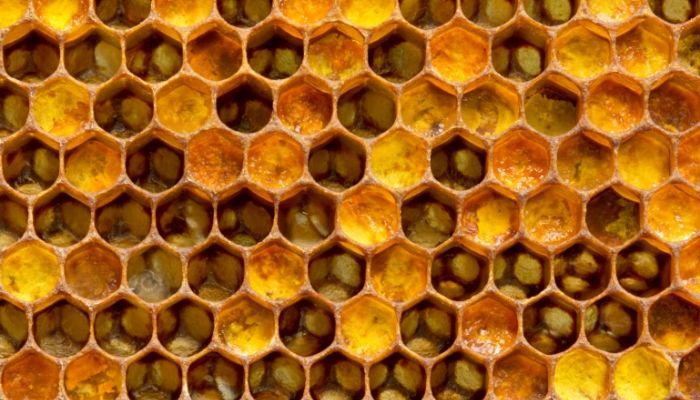Is It A Cold — Or Could You Just Have Fall Allergies?
OCTOBER 17, 2017 by DR. HEATHER MODAY, MD

Why am I sniffling and sneezing in the fall? It must be a cold. Allergies happen in the spring, right? Actually, fall and winter allergies are really common and often get confused with a viral infection.
Yes, fall allergies are a real thing.
The biggest culprit behind these symptoms is a ubiquitous plant called ragweed. Ragweed grows in most parts of the United States and sends out its pollen spores from mid-August until the first frost. Each plant can generate a billion spores, and it grows anywhere—from your backyard, along highways, to cracks in the city sidewalk. Global climate changes—including increases in carbon dioxide levels and ozone levels—also increase the amounts of the ragweed pollen too.
The turning of the leaves and cool, damp fall weather can also bring an uptick in mold spores. Many molds grow on damp fallen leaves, compost piles, or grasses. Unlike pollens, molds do not die with the first frost in the late fall and can last longer. So if jumping in leaf piles with your kids or doing fall yard work gets you sneezing, it may be due to a mold issue.
But wait, not all allergies are due to outside sources.
Fall is when we start spending more time indoors. We pull out boxes of wool sweaters and blankets from the attic that can be very dusty. We may start using heavier down comforters or featherbeds to keep warm at night. In addition, we turn the furnace on, blasting dust and debris along with hot air into our house. All of this causes an increased exposure to dust mites. Dust mites are a microscopic insect related to the spider that feeds on the dandruff or skin cells that we and our pets shed every day. They accumulate in great amounts in sofas, carpets, mattresses, pillows, and other bedding. They prefer warm and humid environments as well.
Many types of molds live indoors. They tend to like damp areas and grow anywhere it is hospitable—like damp basements, poorly ventilated bathrooms, humid crawl spaces, and anywhere there are water leaks, high humidity, or condensation.
Tackle autumn allergies with these four tips.
So what can you do to allergy-proof your home and prevent your symptoms from getting out of hand? Here are my four best tips:
1. Close the windows.
As much as the fresh air is wonderful, if you really suffer at this time of year, keep the windows of your car and house shut during the peak season of ragweed. In addition, when you are home, run a HEPA-filter air cleaner in the bedroom and other rooms where you spend a lot of time. This will keep airborne allergens down.
Also, pollen and mold can come into the house on your clothes and hair, so it’s a good idea to shower before bed and change your pillowcase frequently.
2. Try a filtration mask.
If you do love to do outside yard work or have a lot of leaves to rake, I strongly advise wearing a filtration mask while you do so. You want one that can filter out the tiny mold particles.
3. Watch the moisture in your home.
To keep your indoor allergies at bay, keep the indoor moisture low. This helps for both mold and dust mite reduction. The ideal humidity level in a house is 38 to 50 percent. Use a dehumidifier to control humidity in damp areas inside your house, clean up any areas that appear to be moldy or have a mildew smell. Instead of using bleach, which is toxic to humans and a respiratory irritant, use white vinegar and baking soda, or solutions with tea tree oil and grapefruit seed extract—both of which are effective antifungals. If you do have a leak in the house, have a professional assess it to make sure mold doesn’t grow under carpets or behind walls.
4. Decrease those dust mites.
Although even the cleanest house has tons of dust mites, there are ways to keep them to a minimum and more importantly—away from you.
- Encase your mattress and pillows in dust-mite-proof covers (available from home stores and online).
- Wash all bedding and blankets once a week in hot water and dry in a hot dryer (at least 130 to 140°F) to kill dust mites.
- Replace wool or feathered bedding with synthetic materials and traditional stuffed animals with washable ones.
- If possible, replace wall-to-wall carpets in bedrooms with bare floors (wood or tile) and remove heavy drapes and overstuffed furniture.
- Use a damp mop on floors weekly. Vacuum with either a double-layered microfilter bag or HEPA filter to trap allergens.
- Wear a mask while vacuuming and cleaning to avoid inhaling allergens that are stirred up while cleaning.
If your allergies symptoms still get the best of you, do this.
These are some safe and effective ways to treat allergies if they are getting you down this time of year:
1. Use a neti pot daily.
This is an easy way to rinse any excess dust, mold, and pollen from your nasal and sinus passages. It’s best to use a lukewarm solution of salt and filtered water with a pinch of baking soda. It’s great to use before hitting the pillow so the allergens are cleared from your nose before you sleep.
2. Use a natural nasal spray.
Try using one of these great alternatives to steroid nasal sprays, which can thin the lining of your nose, causing dryness and bleeding. I like Xlear, which is a botanical blend of Xylitol and grapefruit seed extract.
3. Try herbal antihistamines.
Although these take a bit longer to take effect, starting them two to three weeks before the season hits really helps, and they are safer and less sedating than traditional antihistamines. Quercetin is a flavonoid phytonutrient from fruits and vegetables that is especially effective when combined with Bromelain—an anti-inflammatory from pineapples. Try Quercetin 500 mg twice daily along with 500 mg of Bromelain. Stinging nettle is another effective antihistamine that you can take in dried-leaf form at 350 to 400 mg daily, or you can drink stinging nettle tea daily.
Finally, if you are still struggling, you may want to go on an elimination diet, taking out inflammatory foods such as dairy and naturally occurring high-histamine foods. Overall, with a little planning and prevention, you can decrease your allergy symptoms in a safe and natural way.
Reach out to us for a consultation today! Just call 215-558-2731 or fill out our contact form.





